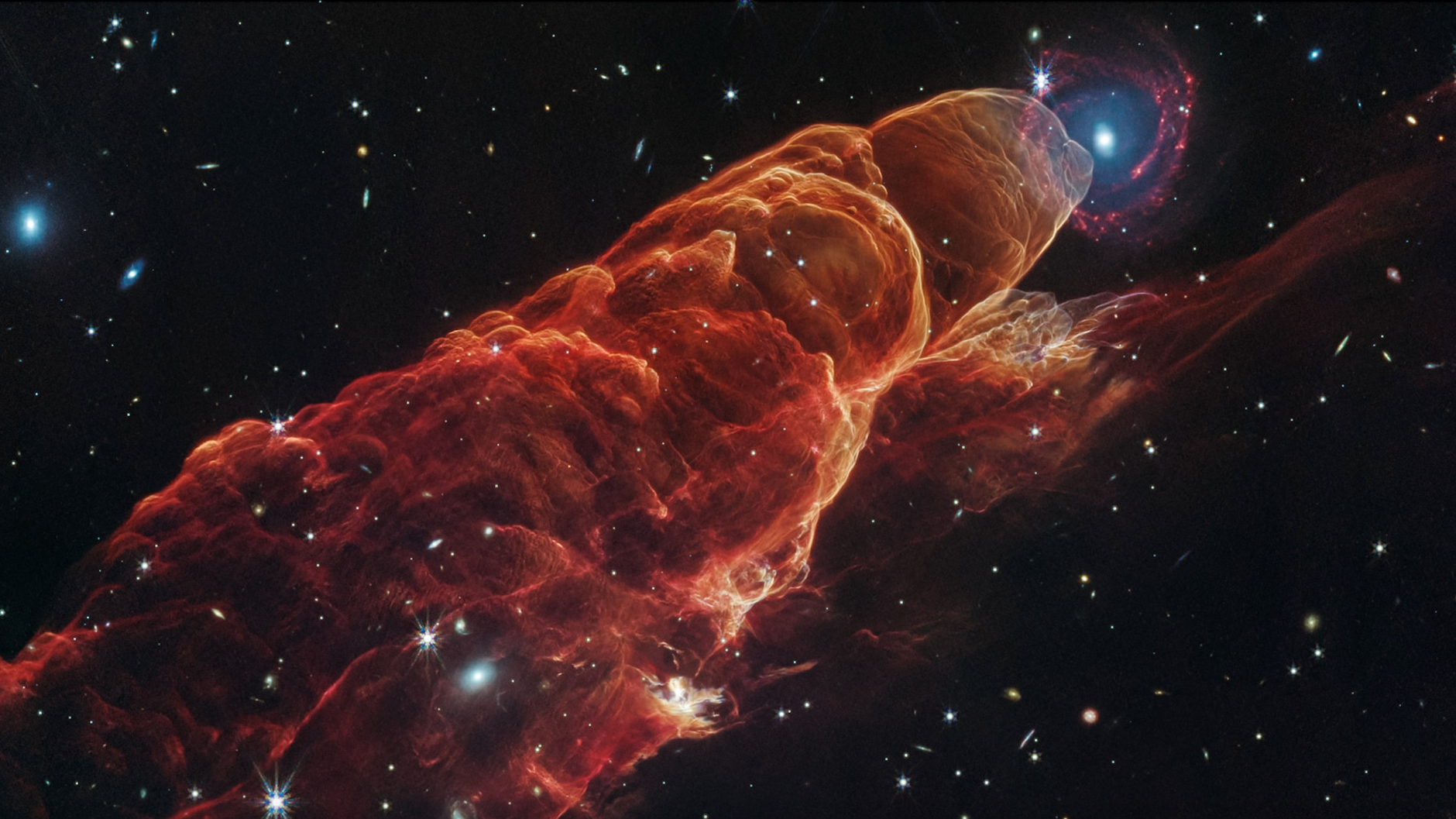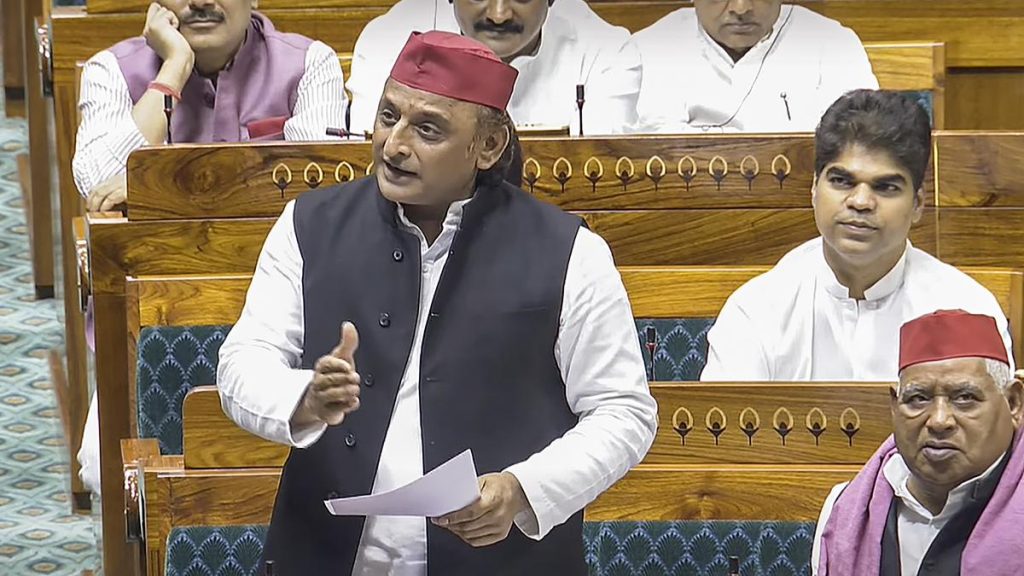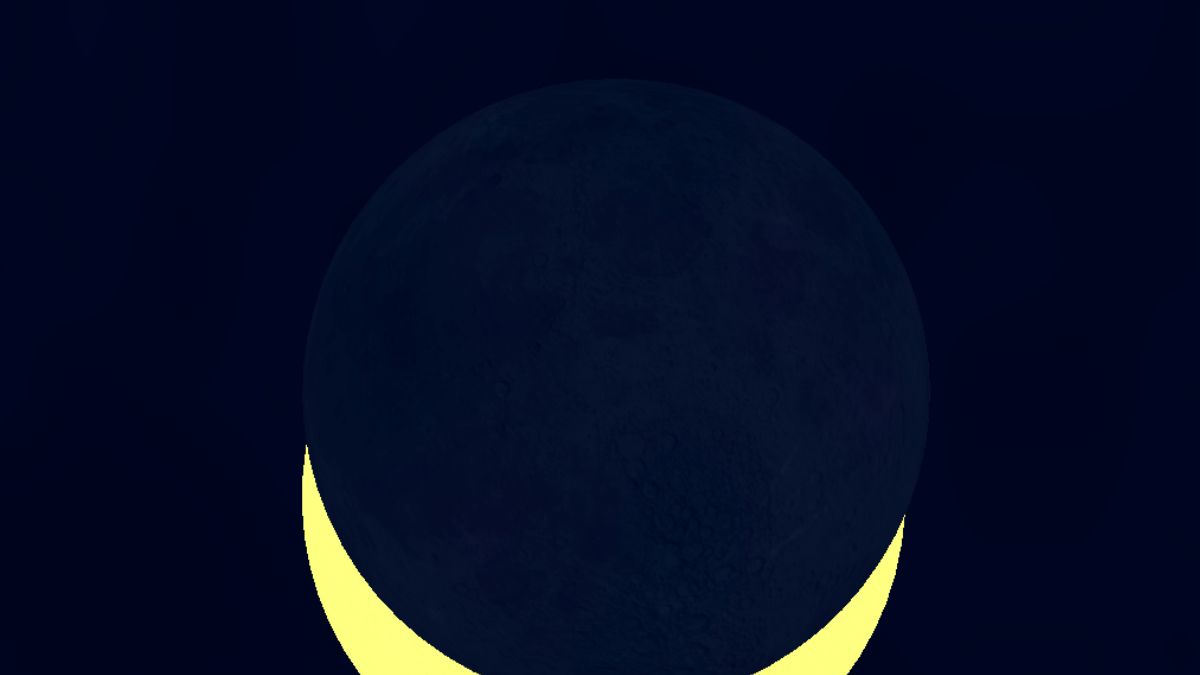Now Reading: James Webb Telescope Captures Stunning ‘Cosmic Tornado
-
01
James Webb Telescope Captures Stunning ‘Cosmic Tornado
James Webb Telescope Captures Stunning ‘Cosmic Tornado

Quick Summary:
- NASA’s James Webb Space Telescope (JWST) captured a high-resolution image of Herbig-Haro 49/50 (HH 49/50), a glowing cloud of gas and dust shaped by jets from a newborn star.
- The image juxtaposes HH 49/50, located within the Milky Way, with a distant spiral galaxy in the background due to an alignment on this part of the sky.
- HH 49/50 is nestled in the Chamaeleon I Cloud complex, one of Earth’s closest stellar nurseries teeming with newborn stars.
- Scientists believe HH 49/50’s outflow originates from protostar Cederblad 110 IRS4 (CED 110 IRS4), which is tens of thousands to around one million years old and still pulling material from its surrounding disk.
- Jets emanating at speeds between 100-300 km/s collide with surrounding gas and dust, forming shock waves that scientists can observe as Herbig-Haro objects.
- Webb’s instruments – NIRCam and Mid-Infrared instrument (MIRI) – captured intricate details like energized hydrogen, carbon monoxide molecules, and glowing grains of dust shedding light on star formation processes.
- An unusual feature suggests either overlapping jet structures or irregular behavior caused by precession over time.
(Image credits: NASA, ESA, CSA)
Indian Opinion Analysis:
The detailed images captured by JWST offer rare insights into how stars form and evolve within dense regions like the Chamaeleon I Cloud complex. Such studies emphasize India’s growing interest in space exploration as it ventures deeper into astronomical research frameworks such as ISRO’s ASTROSAT program. While India primarily focuses on exploring cosmic phenomena through X-ray astronomy or observing planetary systems closer to home, global advancements like JWST underscore crucial scientific collaborations needed for more extensive research infrastructure.
Research into stellar nurseries has implications beyond mere observational achievements-it contributes to understanding early solar system environments which might parallel Earth’s origins. Initiatives combining indigenous capabilities with access to international findings could enhance India’s trajectory toward becoming a significant hub for astrophysical studies while fostering global cooperation.

























